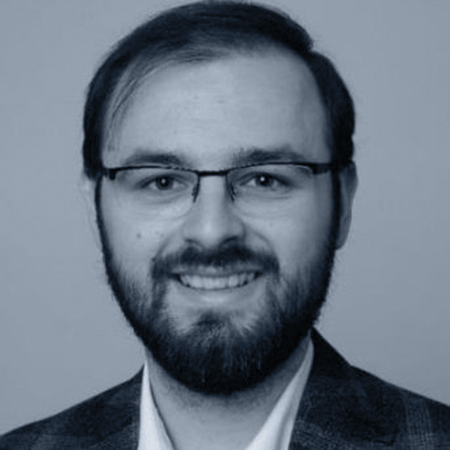
Rostislav-Paul Wilhelm
RWTH Aachen University,
Fellow NHR Graduate School
Contact
Biography
Paul holds a Bachelor and Master degree in Mathematics with a Minor in Physics obtained at the RWTH Aachen. In his Master thesis he researched the extension of the Bogoliubov scalar product to manifolds of non-quadratic matrices and the existence of gradient flows in the induced geometry. After his Master, Paul worked at keenlogics GmbH in Aachen as a soft-ware engineer developing process optimisation software.
Since 2020, Paul is a PhD student at the Institute of Applied and Computational Mathematics (AcoM) at RWTH Aachen and since 2022 also part of the NHR graduate school. His research focusses on developing new methods for the Vlasov-Poisson equation and, in particular, methods avoiding explicit meshing of the phase-space.
Thematic Advice
Kinetic theory and in particular the Vlasov equation provide a good model for many phe-nomena in plasma physics. However, due to the often turbulent behaviour of solutions to the Vlasov equation and high-dimensionality of the phase-space discretisation of the Vlasov equation is a challenging task. While a multitude of methods already exist they either strug-gle with high level of numerical noise, like in Particle-in-Cell (PIC) simulations, or with ex-pensive meshing as well as restrictive CFL-conditions for Eulerian approaches.
This currently makes simulation of realistic flows by the Vlasov equation only accessible by extensive use of computational power of high-end clusters.
Professional Competence
In this current project Paul investigates (Semi-)Lagrangian methods for the Vlasov-Poisson equation. He tries to develop new methods with reduced need of meshing of the phase-space as well as auto-adaptivity further reducing the need of explicit structured grids.
One approach lies in extending the use of the information obtained by the method of characteristics like exactly known function values and reconstruction of the characteristic phase flow.
To this end, Paul can offer experience in both theory and numerics for transport equation as well as a background in physics to develop advanced numerical methods including equation-specific structure.